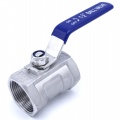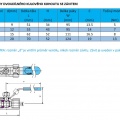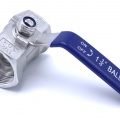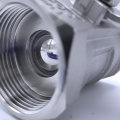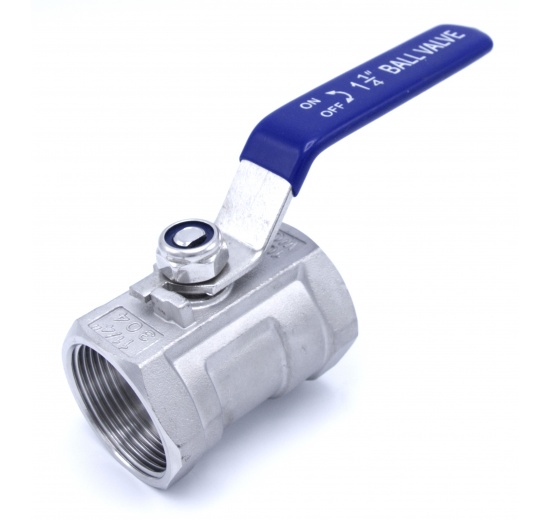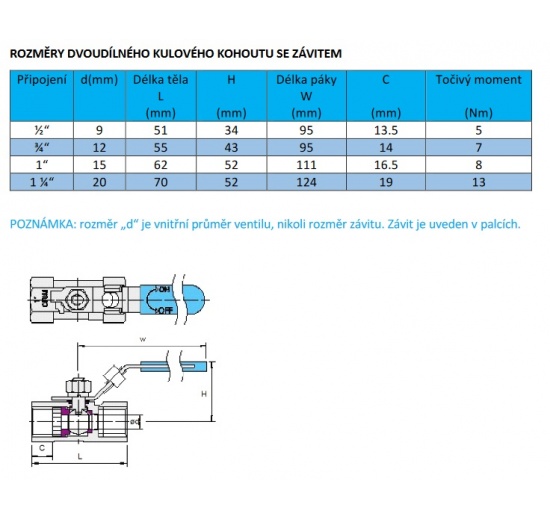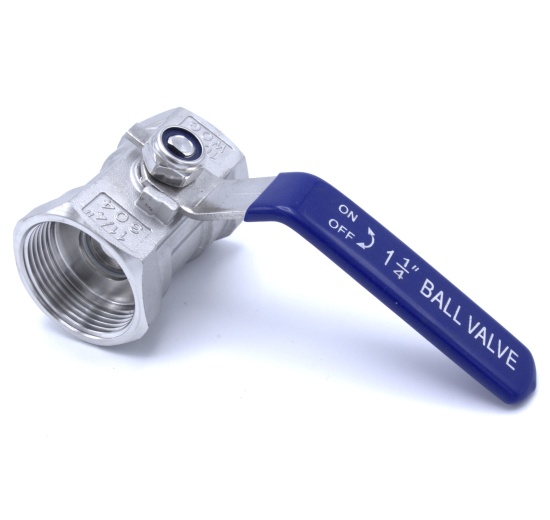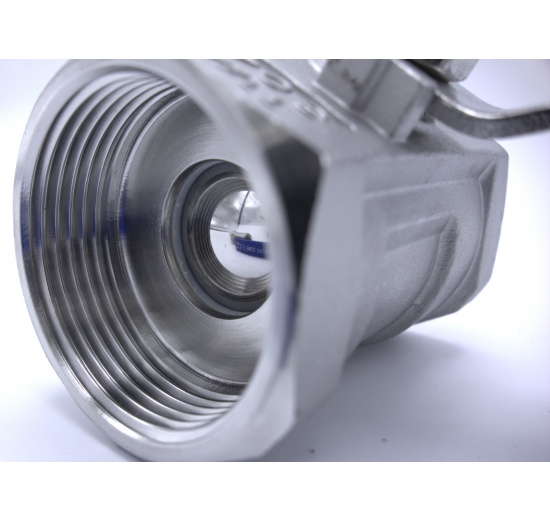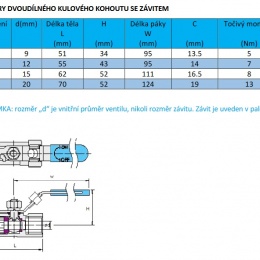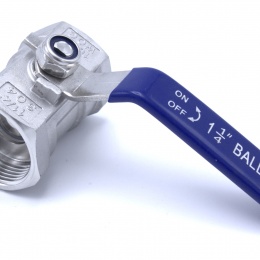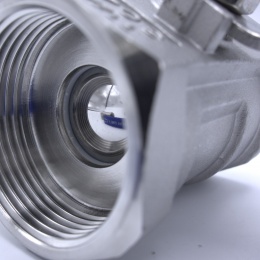Stainless steel ball valve with reduced bore, one-piece, threaded
If the ball has a smaller diameter than the diameter of the connecting pipe, then it is a ball valve with reduced flow.
These valves are cheaper in our offer, but there is a pressure lost with them, and the flow rate increases.
Basic information
| Construction | One-piece ball valve made of 1.4301 stainless steel (AISI 304) with a reduced bore. |
| Control | manually - by using the lever |
| Connection | BSP internal thread G 1/2 ", 3/4", 1 ", 1 1/4" |
| Pressure range | Up to 69 bar (1000 psi), the diagram temperature/pressure. |
| Maximum working temperature | -20°C/160°C |
| Material | body and ball 1.4301 (AISI 304) seat PTFE (Teflon), stem seal PTFE (detailed material composition - see. Picture) |
| Designed for | liquid, water, oil |
Ball valve installation
To connect by screwing into a suitable counterpart. We recommend mounting undertake preservation food grease fittings Loctite 8105th
Most common areas of ball valve applications
Wineries, breweries, the food and beverage industry, the dairy industry, refrigeration, water management applications, the chemical industry, etc.
How to Use a Ball Valve
A ball valve (also called a ball cock or shut-off valve) is a mechanical device used to quickly open or close the flow of liquids or gases. Inside the valve is a hollow ball with a hole through it, which rotates using a handle—when the hole aligns with the pipe, the valve is open; when it’s perpendicular, the valve is closed.
How to Use a Ball Valve
Identify the handle position:
Handle parallel to the pipe = valve is open
Handle perpendicular to the pipe = valve is closed
To open the valve:
Grab the handle and turn it 90° so that it is parallel to the pipe.
To close the valve:
Turn the handle back 90° so it is perpendicular to the pipe.
Usage:
Ball valves are commonly used in plumbing, heating systems, gas lines, and industrial setups.
They are ideal for quick shut-off/opening, not suitable for fine flow regulation.
Tips
Do not force the handle if it’s stuck – it might be clogged or damaged.
If the valve is unused for a long time, turn it occasionally to prevent it from seizing.
For outdoor use, choose frost-resistant versions.






